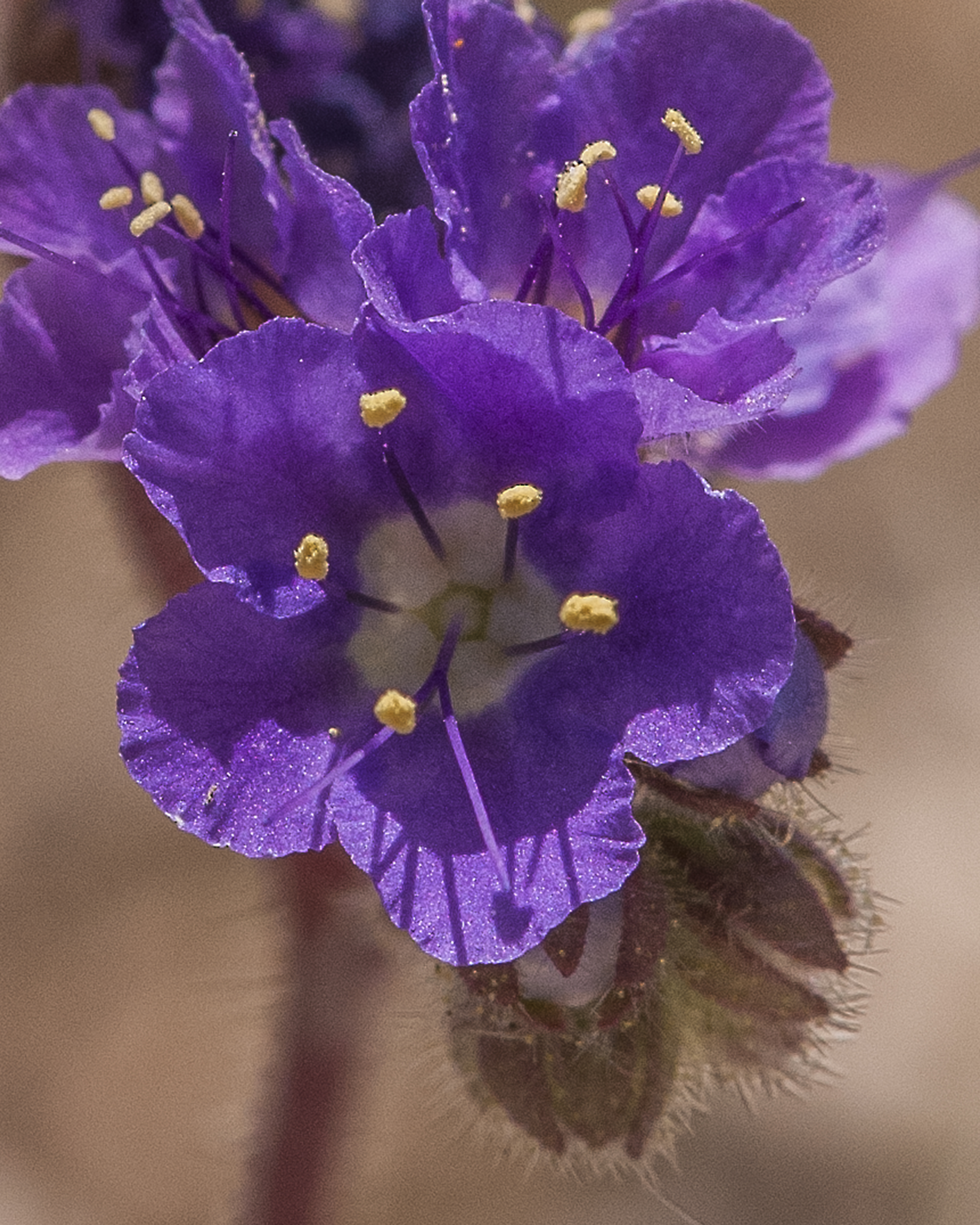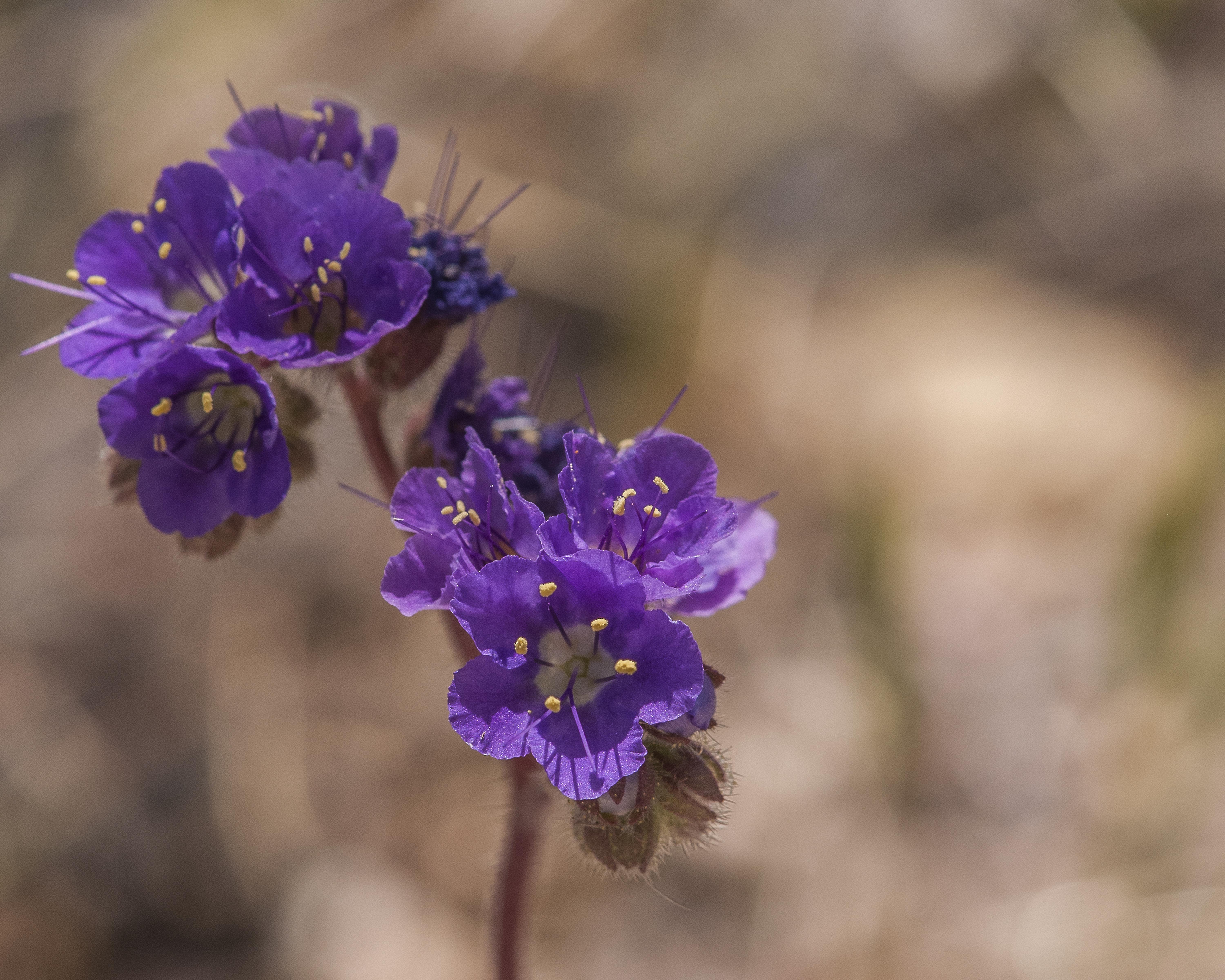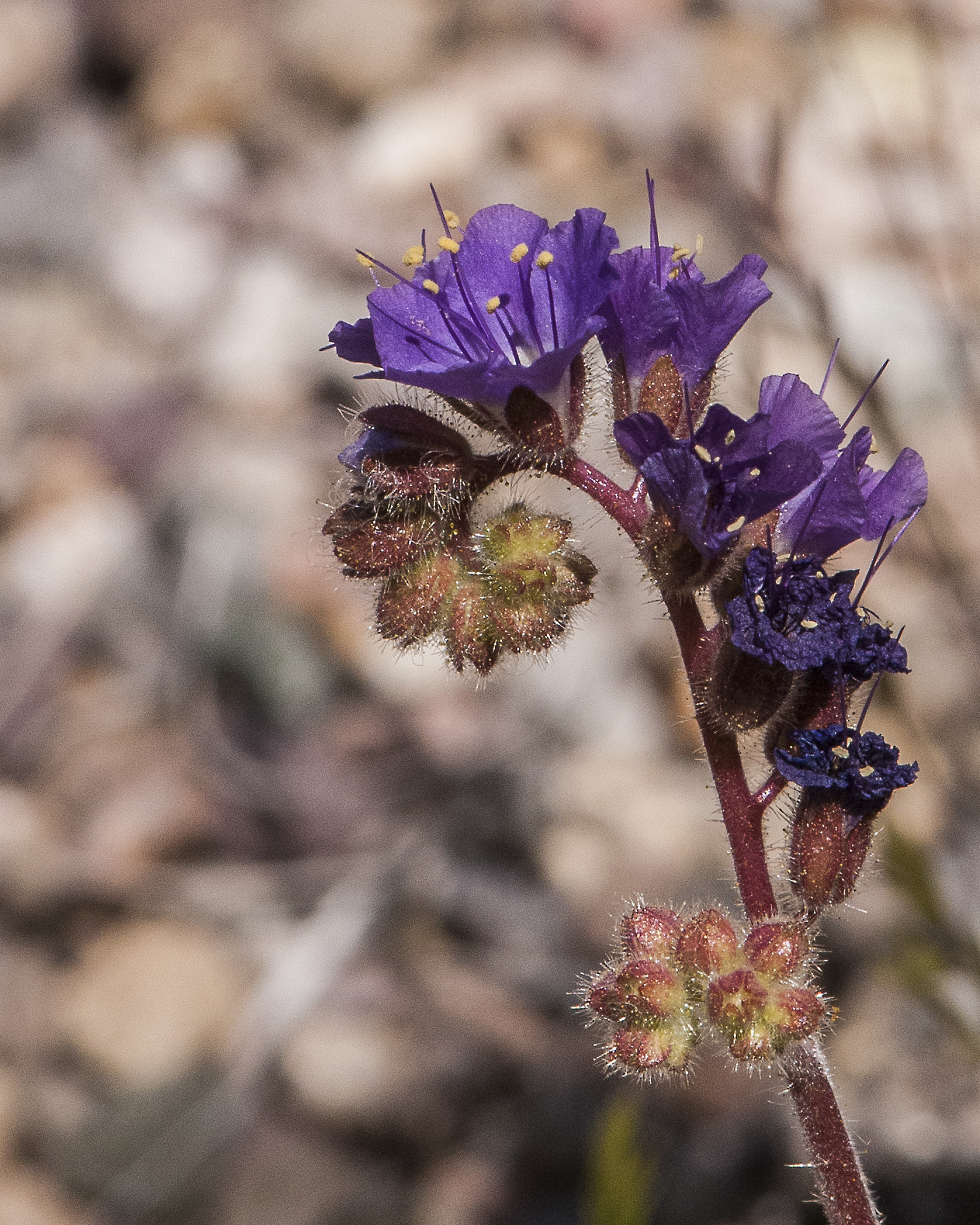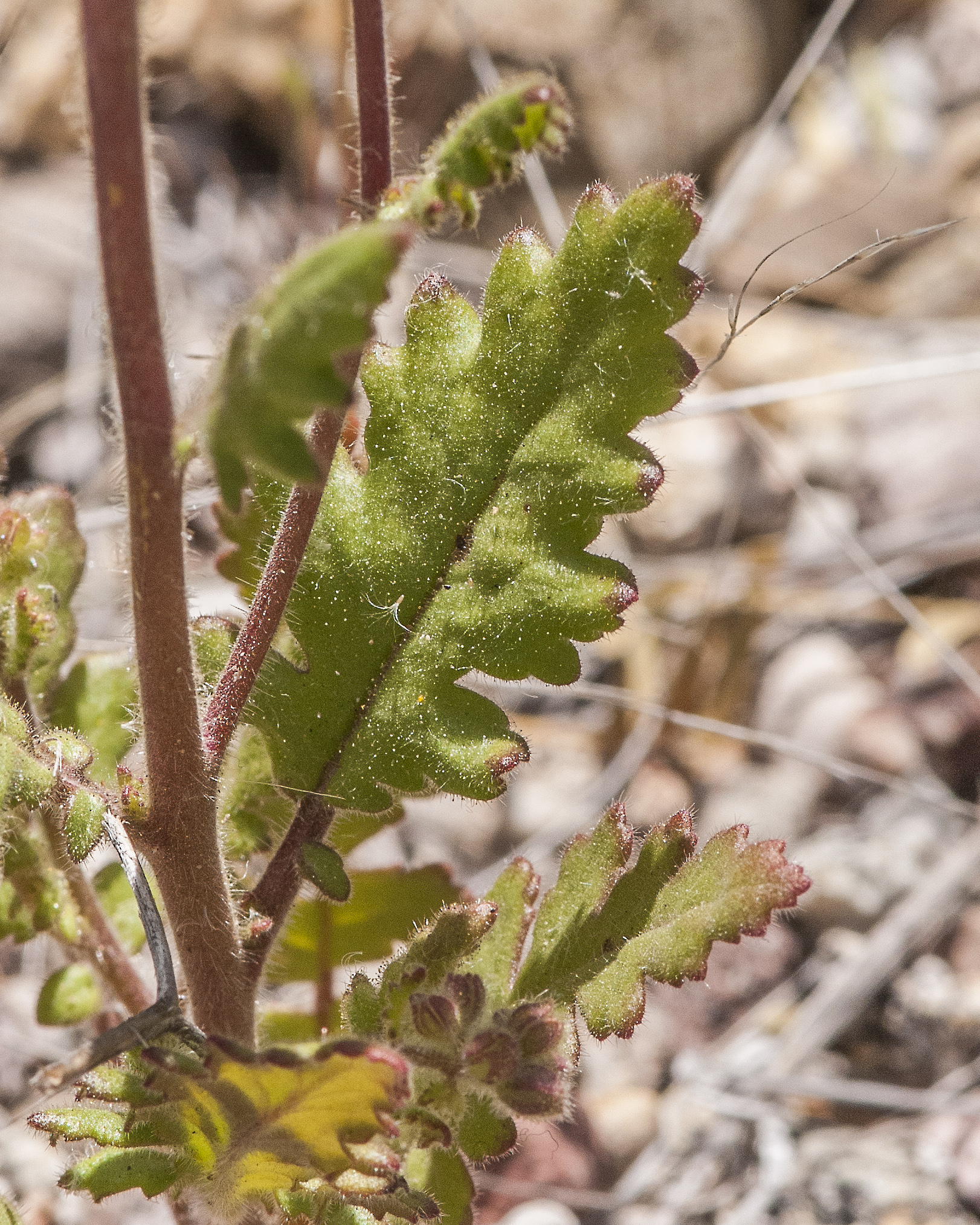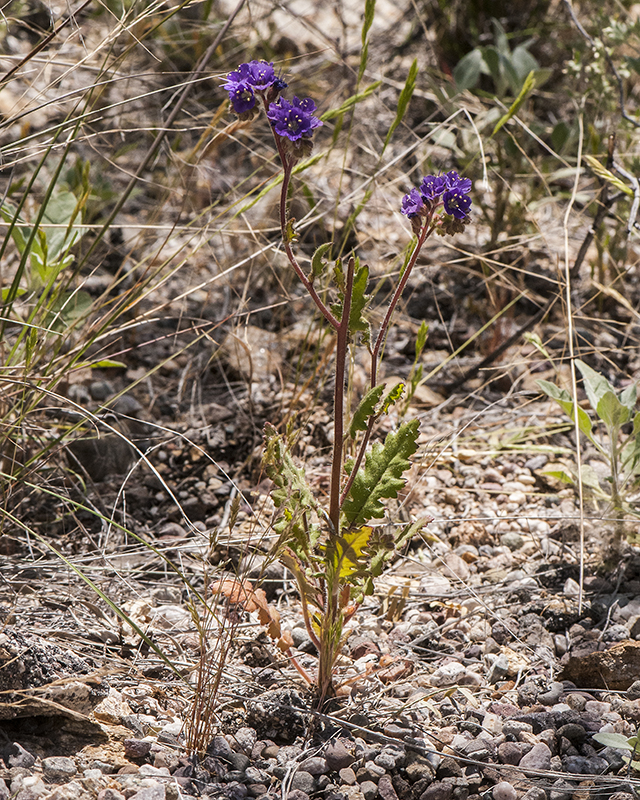Wildflowers of Southern Arizona
Cleftleaf Wild Heliotrope.
Phacelia crenulata.
Borage (Boraginaceae) Family.
Duration: Annual. Nativity: Native. Lifeform: Forb/Herb. General: Pungently scented annual herbs, 10-40 cm tall (occasionally up to 80 cm); stems erect, openly branched; herbage covered with copious stalked glands as well as non-glandular hispid hairs; glands are yellow to orange and smelly. Leaves: Alternate along the stems, the lower leaves on petioles and the upper leaves sessile or nearly so; blades oblong to nearly round (suborbicular) in outline, 2-12 cm long, pinnately lobed, the lower lobes deeply cleft, nearly to the leaf midstem, and the upper lobes shallow; margins lined with rounded teeth; leaf surfaces bearing numerous stalked glands as well as hispid hairs. Flowers: Showy, blue to purple, arranged in dense terminal and lateral scorpioid cymes; corolla campanulate (bell-shaped) and 5-lobed, 4-7 mm long, deep blue to purple to lavender to occasionally white basally; stamens conspicuously exserted 3-11 mm beyond the corolla, with yellow anthers. Fruits: Globose capsules, 3-4 mm long; containing 4 seeds, elliptic to oblong, 3-4 mm long, brown and pitted. Ecology: Found on dry, gravelly hillsides and flats, in sandy and clay soils, from 3,500-7,000 ft (1065-2135 m); flowers April-September. Distribution: c and s CA, NV, UT, w CO, AZ, NM, s TX; south into n MEX. Notes: Positive field identification of Phacelia is quite difficult as species delimitations usually rely on seed morphology. This species distinguished by the deeply pinnatifid leaves, with lower lobes cleft to the midrib and upper lobes more shallowly cleft; upper stem leaves sessile or nearly so; scorpoid (curled) inflorescences; flowers with purple bell-shaped corollas and yellow stamens exserted at least 3 mm beyond the corolla; calyx lobes broad and pointed and little or not surpassing the fruit; and seeds more than 3 mm long, which are corrugate with ridges on the margins of the excavated side. Note that this plant can cause an allergenic response to its hairs. There are several subspecies: var. ambigua is common in the Sonoran Desert of Arizona and southern California, with herbage that is hispid-hirsute with long, very slender hairs, in addition to the gland-tipped hairs. Var. corrugata is common on the Colorado Platau, from the Grand Canyon and Flagstaff area, east to the White Mountains and central New Mexico, and north to Utah and western Colorado; it has leaves that are quite glandular, long and narrow, and evenly lobed no more than halfway to the midrib. Var. angustifolia is restricted to northern Arizona near the Grand Canyon and neighboring southern Utah; it has long, narrow leaves, similar to var. corrugata, but the lobes on the leaves can be cleft more than halfway to the midrib. The genus Phacelia has at different times been placed in Hyrophyllaceae (the water-leaf family) and Boraginaceae (the borage family), so you may need to check both families before finding it in reference books and herbarium cabinets. Ethnobotany: Keres make root tea for sore throat and into rub for swellings. Etymology: Phacelia is based on the Greek phakelos, meaning "cluster," alluding to the densely crowded flower spikes of most species of the genus; crenulata refers to the rounded teeth on the edges of the leaves.
Santa Catalina Mountains
Sabino Canyon Recreation Area
Location: Beside Bear Canyon Road
4/2/19
See SEINet Pictures and Description
See FireFly Forest Pictures and Description


